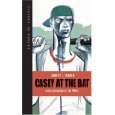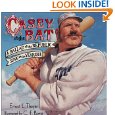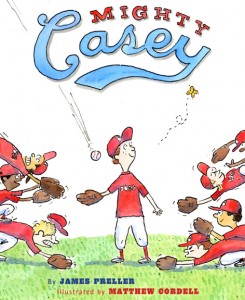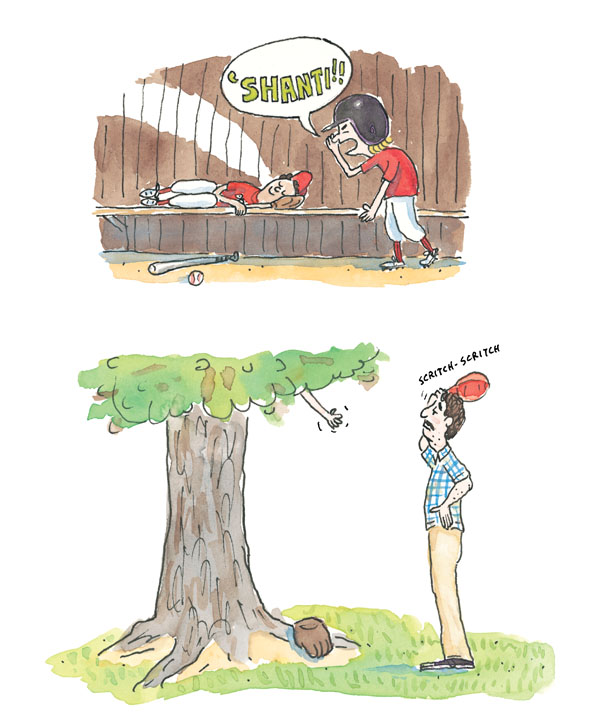In the past, I’ve had the opportunity to interview many children’s book authors and illustrators. In the clumsily named The Big Book of Picture-Book Authors & Illustrators (the title was soooo not my idea), there are profiles of 75 different, urm, authors and illustrators, including Barbara Cooney, Donald Crews, Mem Fox, Kevin Henkes, James Marshall, Barbara Park, Brian Pinkney, Jon Scieszka, Peter Sis, Mark Teague, Charlotte Zolotow — and more.
But I haven’t done that in a while. Until – oh, what the hey! — I decided to try it here. For, like, free. Beats the price of gas, and better mileage, too. I might even make this a recurring feature. So if, Dear Reader, you enjoy reading this kind of thing, encourage me with a friendly comment in the “Friendly Comments” section.
My first guest is Matthew Cordell. Primarily an illustrator — Toby and the Snowflakes by Julie Halpern, Righty and Lefty by Rachel Vail, The Moon Is La Luna by Jay M. Harris — Matthew has recently completed his first self-penned title, Trouble Gum (Feiwel & Friends, Fall ’09). And I’d be remiss if I failed to mention the book we worked on together, Mighty Casey, which you must purchase right now (Feiwel & Friends, Spring, ’09).

Hey, Matt. What have you been doing today?
Hi, JP. Um. Woke up and did my cholesterol-lowering daily jaunt on the treadmill. Then answered email — some business with an editor, an art director, an agent. Then had breakfast. Now here we are.
Wow, I’m impressed. I used that same time to stare vacantly out the window, mumbling and gripping a cup of coffee.
I’m mumbling in my coffee too. We are so self-employed.
It must feel like a big accomplishment to write your first picture book, Trouble Gum. I didn’t even realize that you artists could spell. Tell me about that. Does it take a different part of your brain to write? Was it words first, then pictures? How does that happen?
Spelling aside, writing for me is very, very hard. Trouble Gum is big for me. This will be my first published picture book as both author and illustrator, but not my first picture book idea. I’ve had many. And they always start the same way — visually. With a single image in my head. Then I try to wrap a story around that. It usually bombs hard, but this one
stuck. One of my downfalls as a “writer” is that I can’t stop editing. I write one story about ten different ways and can’t decide on one. Which is how this story happened too, but I had two willing and excellent editors on this who helped keep me calm and focused, Liz Szabla and Rebecca Davis.
How does it work for books you don’t write? I’d guess that different editors send you manuscripts from time to time. How do you decide which ones to accept?
At this point, I’m really aligning nicely, publishing my author-illustrated work with Feiwel and Friends. And regarding my illustrator-only stuff, I used to pound the pavement solo and try to find work that way. But last year, I got picked up by my rock ‘n roll agent, Rosemary Stimola, and she’s been keeping me well stocked with work. Honestly, I haven’t met a manuscript I didn’t like yet. I have turned down projects due to time constraints — if I have a job that conflicts with a proposed project and due dates can’t be moved.
So you’re basically saying you’ll do anything for money.
Wasn’t it one Ludwig Bemelmans who said, “It’s all about the Benjamins.”
I love your blog, by the way. It’s so informal, loose, and friendly. You seem really willing to share your work — even the crummy stuff. Oh, you know what I mean: rough sketches, incomplete ideas, doodlings. It feels like you are open and really enjoy the process.
I love the crummies — a real accident aficionado. It seems to work well as blog fodder. I think everyone, doing whatever they do, finds a different groove to do the thing she/he does so it works for her/him. These differences are what make decent blog news. And for people who know very little about art-making, it’ s all news.
Kids often ask me about “Writer’s Block”. They seem fascinated by the idea. For me, Writer’s Block is just another way of saying that I’m bored — that I’m boring myself. It’s a sign to change things up. Is that true for you? Do you ever get stuck as an artist? And if so, how do you deal with it?
I don’t think I’ve ever been completely “blocked”. I, too, have been somewhat bored at times, with myself, my approach. But it’s so easy to get re-inspired. There’s so much incredible work out there — in both writing and illustration. Inspiration gets me going
again. I like what I’m doing in illustration, but I don’t want to churn the exact same thing out over and over. I like to change a bit here and there — add to and develop in subtle ways. With style and with the tools I use.

At this point, we’re both sitting around, twiddling our thumbs, waiting for Mighty Casey to hit the stores and rock the free world. We’ve both been finished with our part of the work for a long while. How does it feel when you finally get that finished book in your hands? Is it exciting, anti-climatic, disappointing? Will you do the Dance of Joy?
Let me start by saying that, as an illustrator, my single greatest feeling is at the moment of completion. The moment that the art is finished and fresh, successful, and alive and about to go into a sturdy package to FedEx. Now, as for the book itself, man, I’m so self-critical. It’s hard for me to let loose and fully celebrate my own accomplishments. So, honestly, I often look at books hot off the press and immediately think of things I could have done differently. I know. It’s not healthy. Possibly because the publishing process takes years from start to finish. Long after I wrap a book, and it’s published, my new work might have taken a new direction. I probably haven’t seen that art for a long while, either. But then I look at it again, and again, and again (cause that’s what I do), and remember and love it again. And I DO get excited and I do NOT dance. One thing that is, without fail, cool: throughout the process I see my books in various oversized, untrimmed, unfinished ways — single drawings on larger pieces of paper, untrimmed print proofs, or even floppy old F & G’s. To see the final book the first time, professionally designed and trimmed and jacketed — it’s always a unique thrill. Mighty Casey is gonna look great. Thanks to our uber-talented art director, Rich Deas!
What about school visits? Have you visited classrooms? One writer I spoke with, Tedd Arnold, said that it helped him “keep track of their squirmy little reality.” How do you make sure your work connects with young readers?
Aw, man. Public speaking is a minor terror to me. As mainly the book’s illustrator, I’ve not yet felt the pressure to aggressively promote. I kind of felt that each book belongs more to the author — the artist is support player. Which is, I understand, not entirely accurate with the picture book genre, but I’ve used that sweeping conclusion to my own benefit. Having
said it, I haven’t done a ton of stuff with schools. I have done some stuff when I first fell into this biz, with my first picture book, Toby and the Snowflakes. Cause that was written by my main squeeze, author and wife-to-me Julie Halpern. We promo’d together at a few schools and bookstores. It was easier for me to go in as a team. But it’s really something I have to overcome. Can’t hide in the studio forever!
How’s that working out for you, living with a writer? I hear they can be insufferable.
Truthfully, I think my writer might have more to say about living with her illustrator.
Okay, now for the Lightning Round. Favorite children’s books?
Sylvester and the Magic Pebble, Mouse Tales, Martin Pebble, Leon and Bob, The Lorax, Olivia, Muncha! Muncha! Muncha!, The Monster at the End of this Book.
Favorite musicians?
Bob Dylan, Nina Simone, The Who, Woody Guthrie, George/Ira Gershwin, Toots and the Maytals, Vinicius de Moraes, Hank Williams, Fugazi.
Movies?
It’s a Wonderful Life, The Big Lebowski, Rushmore, The Matrix, Rear Window, American Splendor, Breaking Away, Vertigo, The Aviator, Sideways, Raising Arizona, Singin’ in the Rain.
Artists?
William Steig, Saul Steinberg, Francesco Clemente, Art Spiegelman, Michel Rabagliati, Chester Brown, Martin Kippenberger, Jean-Jacques Sempe, Cy Twombly.
Dessert? (And for some reason, I just know you are going to say, pie. Maybe it’s the Southern-roots thing.)
Even though I do enjoy many varieties of pie, I must disappoint you by answering cake.
Chocolate?
How’d you know?
Is there another kind? Anyway, Matthew, I see that our time is up. Thanks. You’ve got a great spirit. I know your career is just beginning to take off — great things ahead. I hope we can actually meet-meet one day, outside of Cyberspace. But until then, we’ll remain Brothers in Blog!












